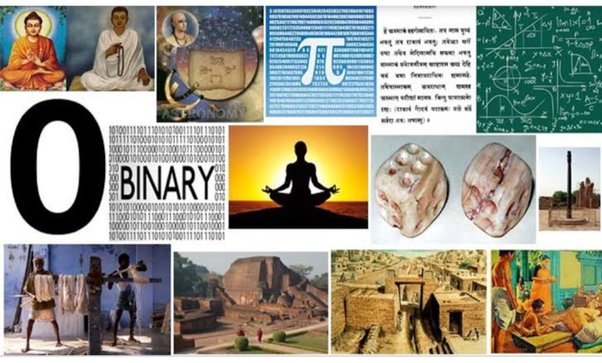India, with its history and diversity of culture, has been a significant cradle of innovation and invention in humankind for centuries. From ancient times to the present, Indian inventors and intellectuals have contributed much to mathematics, astronomy, medicine, technology and games.India, with its history and diversity of culture, has been a significant cradle of innovation and invention in humankind for centuries. From ancient times to the present, Indian inventors and intellectuals have contributed much to mathematics, astronomy, medicine, technology and games. The paper at hand focuses on some of the most influential inventions and discoveries emerging from India, their historical context, and the way they continue to influence world learning and practice.
- KHOJ
- inventions from India
- zero
- invention of zero
- Aryabhata
- Brahmagupta
- Charaka
- Sushruta
- iron pillar
- Takshashila
1.
IIntroduction
India's contribution to the world lies far beyond its cultural and spiritual heritage. The country has a history of significant and pioneering scientific and technological breakthroughs which have been paramount in shaping human civilization. This article delves into a few of the most amazing inventions and discoveries that have been made in India, from ancient to modern times The idea of zero as a numeral and also as a number of positional power was discovered and first documented in India in the 5th century AD. Aryabhata, a great mathematician, introduced the concept, and Brahmagupta, another great Mathematician, later went on to formalize its use, making it one of the founding and fundamental pieces of the development of mathematics for the world. The value zero made arithmetic and calculus much more efficient, making binary calculations and today's modern computing systems a possibility Ayurveda is a traditional system of medicine that originated in India over 3,000 years ago. With an emphasis on balance in body systems, the practice uses natural remedies and lifestyle practices for health and wellness. Charaka Samhita and Sushruta Samhita are ancient texts that abound with knowledge about surgery, anatomy, and pharmacology, and these have been used as a reference in contemporary treatments as well The Iron Pillar of Delhi, erected during the Gupta Empire (c. 402-415 CE), is a testament to ancient Indian metallurgy. This 7-meter tall pillar has withstood corrosion for over 1,600 years, demonstrating advanced knowledge in the composition and treatment of iron Chess is said to have been invented in ancient India, being known as Chaturanga, in the 6th century. It was a game to emulate the strategy that military forces should use, representing the four divisions of an army or militia: infantry, cavalry, elephants, and chariots. This very game was taken to Persia, and from there, it reached Europe, where it developed into the modern game of chess .[1 Takshashila was the world's first university, founded in India around 700 BCE. More than students from over 36 regions, across Asia, including China, Greece, and Persia, were known to have. The subjects taught at the university included medicine, law, military science, and Vedas and helped spread the world The word "shampoo" itself has been taken from the Hindi word "chāmpo" which means to massage. In India, the origins of shampooing began with a variety of herbs and natural ingredients that helped cleanse and nourish hair. This was then introduced to Europe by colonial traders in the late 18th century The game Snakes and Ladders was made in ancient India, and it was called Moksha Patam. Virtues were represented by ladders, while vices were represented by snakes in the game. Later, it was modified and brought to the West by British colonists to become a favorite of children Sushruta, an ancient Indian physician, is often regarded as the father of surgery. Around 800 BCE, he pioneered techniques in cataract surgery that laid the foundation for modern ophthalmology. His methods involved using a curved needle to remove the cataract lens and have influenced medical practices globall y The decimal system, including the use of place value and a decimal point, was developed in India and transmitted to the Islamic world before reaching Europe. This system is fundamental to modern mathematics and scienc e Particle physics and the Higgs boson played a significant role in the theoretical structure and were deeply indebted to the contribution made by Indian physicist, Satyendra Nath Bose. Bose's collaboration with Albert Einstein created the concept of the Bose-Einstein condensate state of matter, thus contributing to hundreds of further scientific advances. Narinder Singh Kapany, an Indian-American physicist, is acknowledged as the inventor of fiber optics. His work in the 1950s became the foundation for the worldwide development of fiber optics, which now serves as the backbone of telecommunications as well as the internet. India’s history of innovation is a testament to its profound influence on global knowledge and technology. From the ancient concept of zero to modern advancements in physics and telecommunications, Indian inventors and scholars have consistently contributed to human progress. Recognizing these achievements not only highlights India’s rich intellectual heritage but also inspires future generations to continue exploring and inventing
.
2. Inventions from Ancient India
2.1. Zero
.2.2. Ayurveda
.2.3. Iron Pillar of Delhi
.2.4. Chess
]2.5. The First University: Takshashila
.2.6. Shampoo
.2.7. Snakes and Ladders
.3. Medieval and Early Modern Innovations
83.1. Cataract Surgery
.93.2. The Decimal System
.4. Modern Contributions
4.01. The Boson Particle
114.2. The Fiber Optics Revolution
5.
Conclusion
